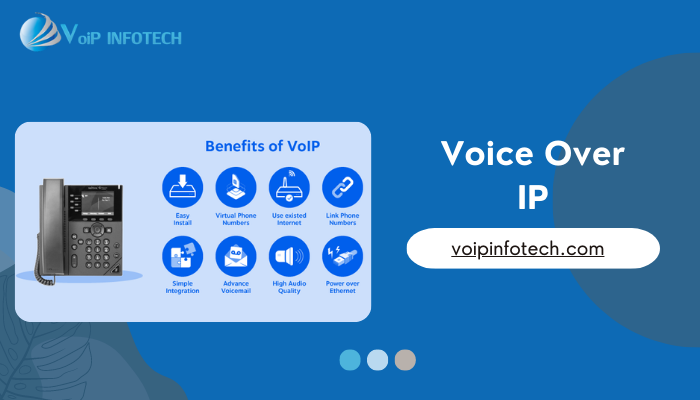In today’s digital age, effective communication is essential for the success of any business. As technology continues to advance, traditional phone systems are gradually being replaced by Voice over IP (VoIP) solutions. With their cost-effectiveness, scalability, and advanced features, VoIP systems have revolutionized the way businesses communicate. In this article, we will delve into the world of VoIP, exploring its definition, functionality, benefits, types of systems, considerations for implementation, common features, security aspects, troubleshooting tips, and future trends.
1. Introduction: Embracing the Power of Voice over IP
Welcome to the world of Voice over IP (VoIP), where communication takes on a new dimension. In this era of digital transformation, VoIP stands at the forefront, harnessing the potential of the internet to transmit voice data. As businesses bid farewell to outdated phone systems, they embrace the versatility, cost savings, and enhanced capabilities of VoIP. In this article, we will embark on a journey to discover the intricacies of VoIP, uncover its inner workings, and explore the myriad benefits it offers for businesses of all sizes.
2. What is Voice over IP? Unraveling the Mystery
Voice over IP, commonly known as VoIP, is a groundbreaking technology that enables voice communication over internet protocol networks. Unlike traditional phone systems that rely on dedicated copper wires, VoIP converts analog audio signals into digital data packets, facilitating smooth and efficient transmission over the internet. With VoIP, businesses can engage in internal and external calls, while also enjoying additional features such as video conferencing, instant messaging, and collaboration tools.
3. How Does Voice over IP Work? Decoding the Mechanics
At its core, VoIP operates by breaking down voice signals into small data packets and transporting them across the internet to the intended recipients. Let’s unravel the mechanics behind this process:
Analog-to-Digital Conversion: To embark on its digital journey, voice signals from microphones or telephones undergo analog-to-digital conversion. This transformation occurs through the utilization of a codec (coder-decoder) that compresses the voice data, reducing bandwidth requirements while preserving audio quality.
Packetization: The digital voice data is then divided into bite-sized packets, each containing a segment of the voice signal. These packets are meticulously labeled with headers, which house vital information such as the source, destination, and other relevant details.
Routing: Once packaged, the voice data packets traverse the vast expanse of the internet, propelled by standard internet protocol (IP) routing techniques. These packets navigate through local area networks (LANs), wide area networks (WANs), and the intricate web of the internet itself.
Destination Handling: Upon reaching their intended recipients, the packets are skillfully reassembled in the correct order and transformed back into analog audio signals. This reversal is accomplished through the deployment of a codec at the receiving end, ensuring the clear audibility of the voice transmission.
4. Benefits of Voice over IP: Unleashing the Power
VoIP brings forth an array of benefits that empower businesses and revolutionize communication. Let’s explore the key advantages:
Cost Savings: With VoIP, businesses can bid farewell to exorbitant telephone bills. By consolidating voice and data networks, organizations can reduce infrastructure costs. Additionally, international and long-distance calls become significantly more economical compared to traditional phone systems.
Scalability and Flexibility: VoIP systems offer unmatched scalability and flexibility. As businesses evolve, so can their communication infrastructure. Adding or removing extensions becomes a seamless process, and employees can access their phone lines from anywhere with an internet connection, fostering remote work and mobility.
